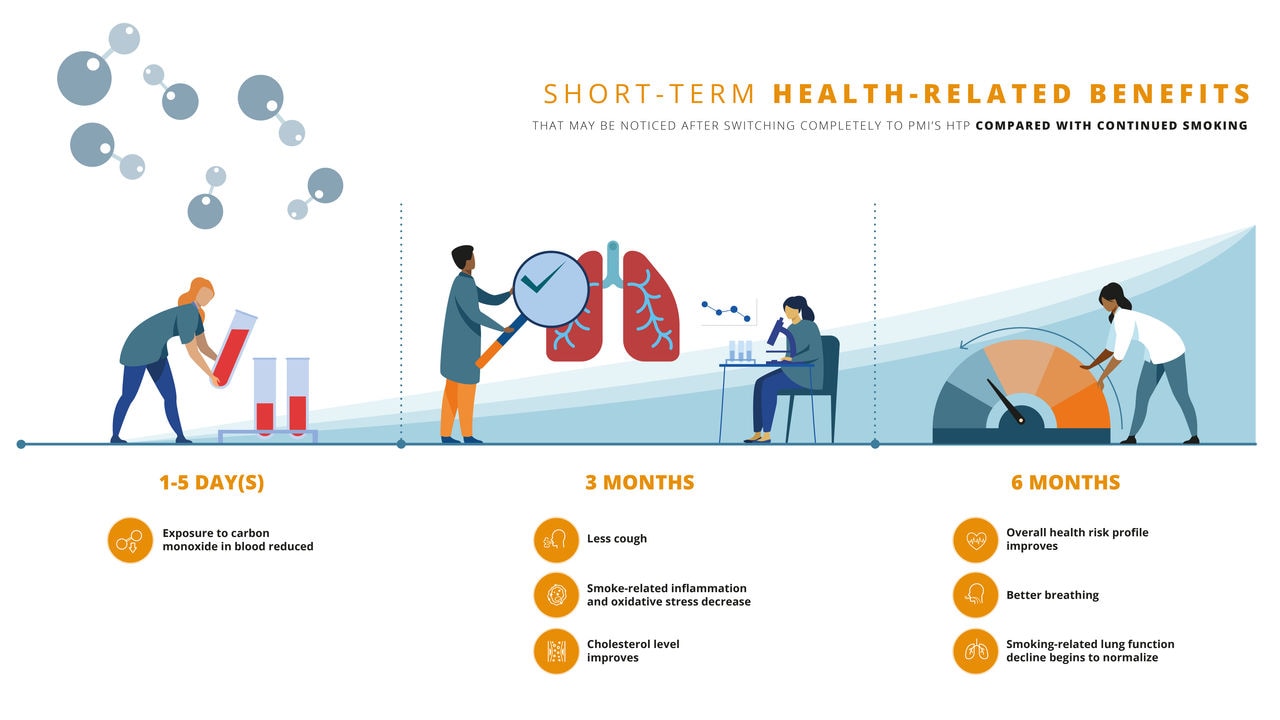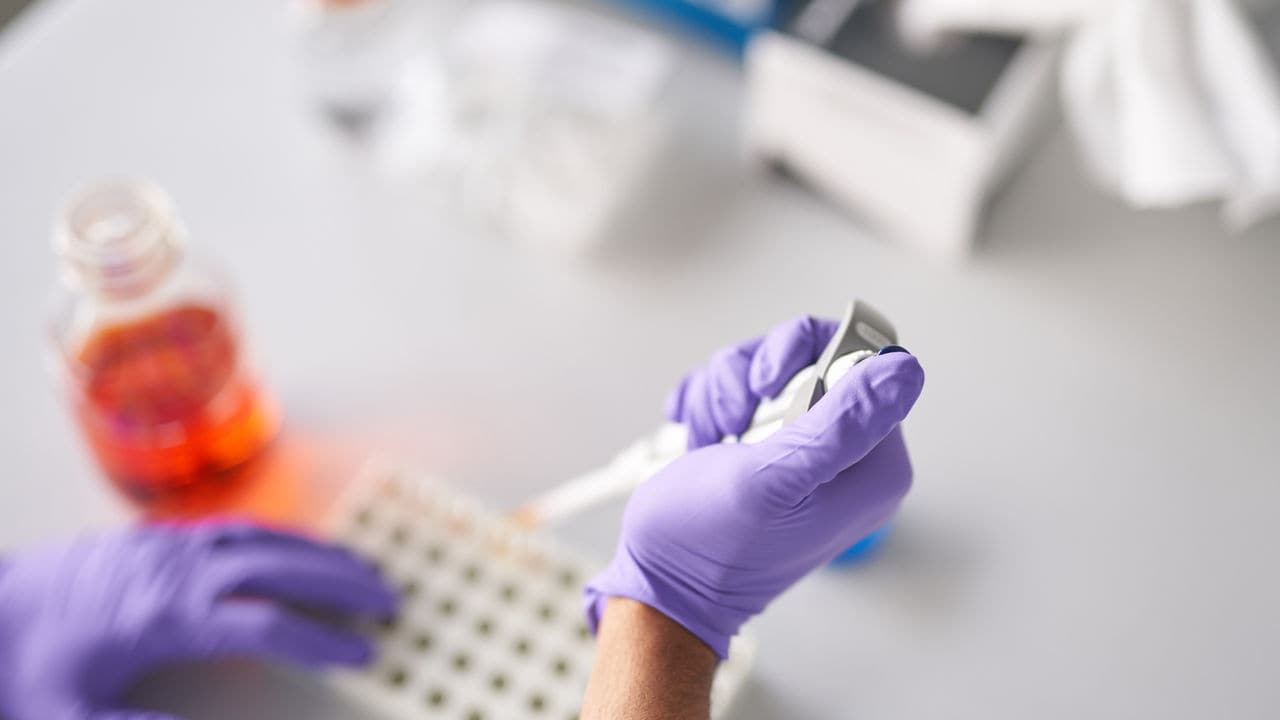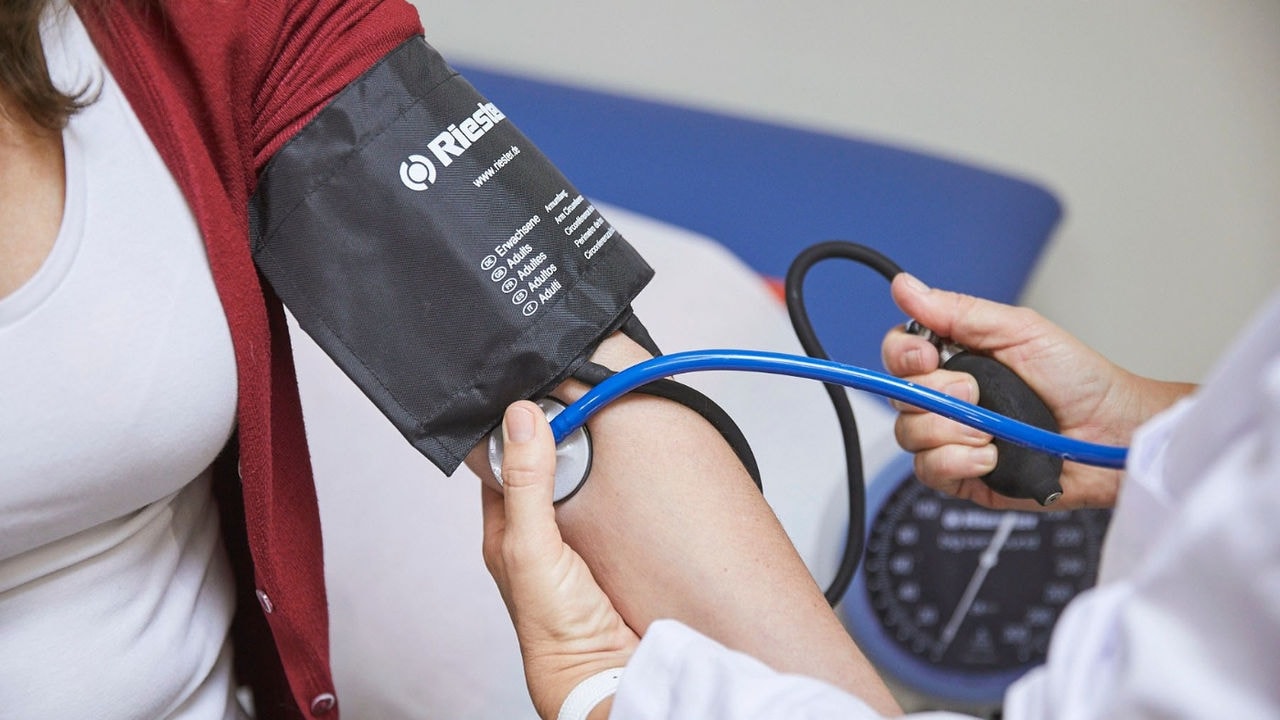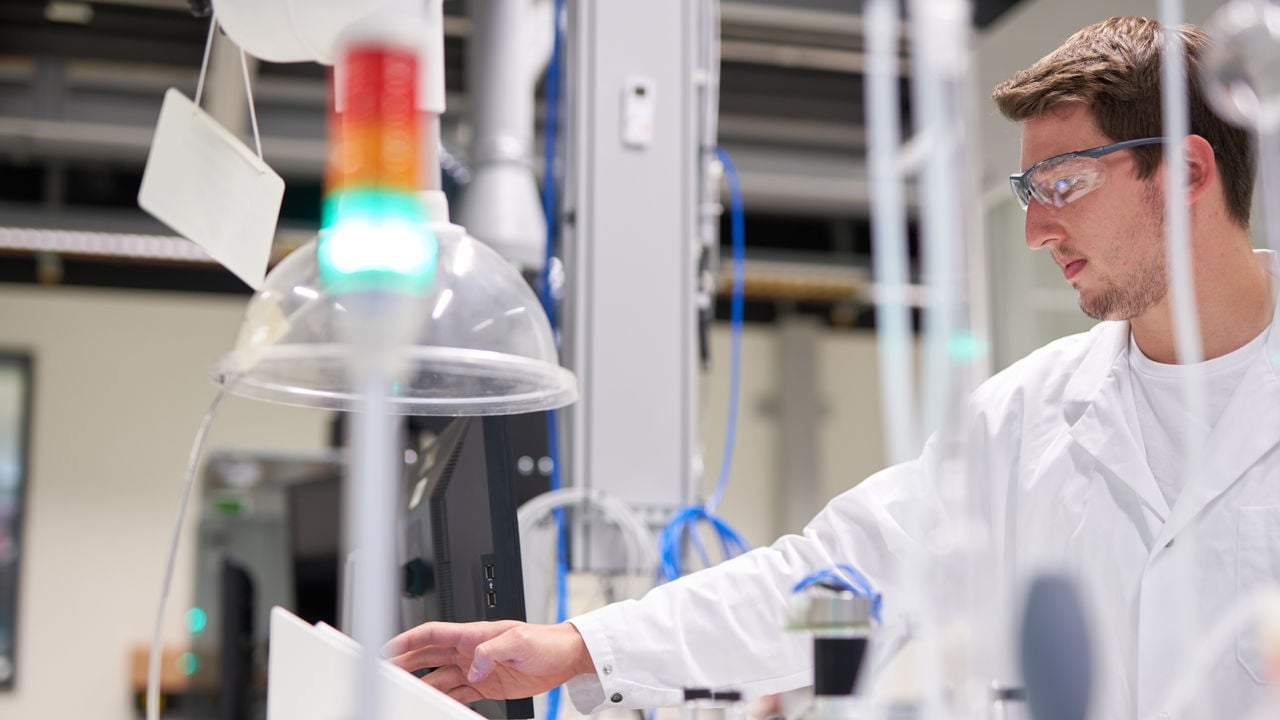Short-term effects of switching from cigarettes to our heated tobacco product
Quitting is the gold standard for tobacco harm reduction
The best way to avoid the harm of smoking is to not start in the first place. For someone who already smokes, quitting altogether is the single best thing they can do to reduce their risk. However, if an adult smoker won’t quit, then switching to a product that doesn’t burn tobacco can be a better choice than continuing to smoke cigarettes. This is because the vast majority of harmful chemicals found in cigarette smoke and linked to smoking-related diseases are generated by combustion. Smoke-free products are not risk free and contain nicotine which is addictive. A scientifically substantiated product can be a better choice for adult nicotine users.

When someone stops smoking, their risk of developing smoking-related health problems and diseases will not disappear overnight, but it will decrease with time. The longer they’ve smoked, and the more cigarettes they smoke during that time, the bigger their risks. This is why it’s so important for a smoker to stop smoking as soon as possible. After the first few days of someone quitting cigarettes altogether, their exposure to toxicants is greatly reduced and within 3 to 6 months they may notice a decrease in their coughing and shortness of breath.
The best choice a smoker can make is to stop smoking altogether. Unfortunately, not everyone who smokes makes that choice. In recent years, alternative products to cigarettes, for those adults who continue using tobacco or nicotine products, have been developed. Choosing to use smoke-free products can be a better choice for adult smokers than continuing to smoke because these products do not burn tobacco. It is important for each product, though, to be scientifically verified to evaluate how much better they really are compared with cigarettes.
Here, we’ll describe some of the data collected on changes smokers may observe in their body as a result of switching to the THS, our leading HTP.

Reduced exposure to carbon monoxide in the blood
Carbon monoxide (CO) is released during the burning process, like in a cigarette. When the smoker puffs on a cigarette, CO enters the body and binds to the hemoglobin in red blood cells instead of the oxygen that it normally carries. Continued exposure to low levels of CO, as smokers have, reduces the amount of oxygen that is delivered throughout the body and can increase the risk of cardiovascular events.
Within days after switching from cigarettes to THS, the body is exposed to lower levels of CO. THS produces on average 98% less CO compared with cigarettes. In PMI’s reduced exposure studies, in participants who switched completely from cigarettes to THS, we observed a significant drop in exposure to CO after just 24 hours of switching. That reduction was almost the same as the reduction observed for those who quit smoking.
Better breathing and lung function decline begins to normalize
Lung function naturally declines gradually as we age, but smoking accelerates this process. With time, the toxicants in smoke can damage the lungs and affect how they work. In addition, coughing is more common among smokers compared with nonsmokers, and severe coughing can impact quality of life of the smokers. Quitting smoking altogether is the best way for a smoker to reduce the rate of decline compared with continued smoking.
Our studies show a reduction of the self-reported need to cough over the past 24 hours that starts as soon as 3 months after switching from cigarettes to mainly using THS. In the Exposure Response Study, the THS users were 60% less likely to need to cough than cigarette smokers after 6 months—a statistically significant result. This reduction was also observed after just 3 months of switching to THS, although not statistically significant. Similar results were observed in our 3-month reduced exposure studies.
After 6 months of switching completely to THS, users can experience better breathing compared with continued smoking, according to the results we see on the impact on lung function for adults switching to THS versus continuing to smoke. One important measure of lung function is the FEV1 test or forced expiratory volume in one second. It calculates how much air a person can exhale in one second. FEV1 was measured in our Exposure Response Study for people who switched to mainly using THS and those who continued with smoke cigarettes. The clinical data shows a statistically significant improvement in the FEV1 test at the 6-month mark among those who switched completely compared to those who continued to smoke cigarettes. This difference is likely associated with better breathing capacity.
Decreased oxidative stress and inflammation
Oxidative stress occurs when there are too many highly reactive molecules (oxidants) in the cells—there is an imbalance between oxidants and antioxidants. Oxidative stress is involved in the development of cardiovascular diseases, chronic obstructive pulmonary disease (COPD), and lung cancer. Cigarette smoke increases oxidative stress because it has a high level of oxidants, therefore reducing antioxidant defenses. Stopping smoking helps reduce oxidative stress, as measured in our Smoking Cessation Study via the biomarker 8-epi-PGF2α, the gold standard for the evaluation of oxidative stress in the human body. This biomarker was reduced in participants who quit smoking by 9.98%, 16.2%, and 18.8% compared to baseline after 3, 6, and 12 months, respectively.
In our Exposure Response Study, after 3 to 6 months of switching from cigarettes to mainly using THS, oxidative stress measured via the urinary levels of 8-epi-PGF2α were decreased compared with continued smoking. The switching group had lower levels of 8-epi-PGF2α compared to those who had continued smoking: a 6.23% at 3 months into the study, and 6.8% at 6 months. While this measurement was not statistically significant, there was a trend of reduced oxidative stress compared with continued smoking.
Similarly, after 3 to 6 months the smoking-related inflammation decreased in those who switched to THS compared to those who continued smoking. This was measured using the white blood cell count, which stays high while a person continues to smoke. Study participants who switched to mostly THS use showed significantly lower white blood cell counts, 0.475 GI/L and 0.420 GI/L after 3 and 6 months, respectively, compared with continued smoking. The difference was statistically significant at 6 months.
Improved cholesterol levels
Smoking cigarettes changes the way the body metabolizes cholesterol, generally reflected by a decrease in good cholesterol in the body. HDL-C (high-density lipoprotein cholesterol) is known as “good cholesterol”, because this protein picks up cholesterol and other molecules in the body and transports them to the liver (and certain other organs) to be removed from the body. Higher HDL-C values are associated with a lower risk of atherosclerosis. In contrast, LDL-C (low-density lipoprotein cholesterol) is known as “bad cholesterol” that contributes to the atherosclerotic plaque buildup.
After 3 to 6 months of switching from smoking cigarettes to using mainly THS, the levels of “good” cholesterol improve compared with continued smoking. In studies by PMI and others (see links below), participants who switched from cigarettes to THS saw their levels of biomarkers of exposure to harmful chemicals reduce and the level of HDL-C increase. After 6 months, participants who switched had a statistically significant increase of 3.09 mg/dL in their HDL-C, which is approximately double the change that was seen at 3 months. This increase approached the levels encountered after smoking cessation.
Read more about the studies discussed in this section:
- Evaluation of Biological and Functional Changes in Healthy Smokers After Switching to THS 2.2 for 26 Weeks Registered on clinicaltrials.gov
- The effect of quitting smoking on HDL-cholesterol - a review based on within-subject changes
- High-density lipoprotein and atherosclerosis: the role of antioxidant activity
Overall health risk profile improves
What we can clearly see from this summary of our research is how a smoker’s overall health-risk profile can improve over time after switching to our leading heated tobacco product THS. We saw that exposure of the body to carbon monoxide decreases, breathing becomes easier, coughing lessens, inflammation and oxidative stress decrease, and cholesterol improves for those smokers who made the switch.
Switching from cigarettes to a smoke-free product will never be better for health than stopping the use of all tobacco and nicotine-containing products. The research discussed here clearly shows that switching to this particular smoke-free product can reduce the harm from smoking compared with continued cigarette use, and that the impact of switching on a person’s health likely adds up over time.

Read the Scientific Update magazine
The Scientific Update magazine is focused on PMI's research and development efforts, milestone studies, industry regulations, and more. View the latest issue, or read the articles online.





